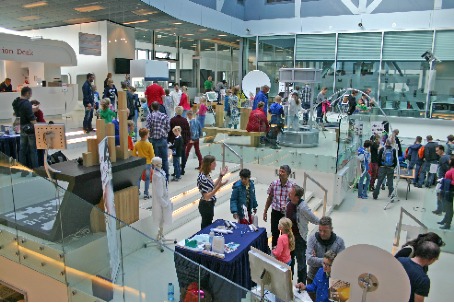Activiteiten
Science LinX organiseert vele activiteiten voor jong en oud. Wat dacht je van...

Kinderen
Sterren kijken en zelf proefjes doen? Wij hebben een variatie aan activiteiten voor kinderen. Laat kinderen op jonge leeftijd kennis maken met wetenschap!
Sterren kijken en zelf proefjes doen? Wij hebben een variatie aan activiteiten voor kinderen. Laat kinderen op jonge leeftijd kennis maken met wetenschap!

Tieners
Experimenteren met proefjes thuis, een wiskunde tocht door de stad of hulp krijgen met je PWS? Science LinX biedt verschillende wetenschapsproefjes en ondersteuning aan om jou nieuwsgierig te maken op het gebied van Wetenschap.
Experimenteren met proefjes thuis, een wiskunde tocht door de stad of hulp krijgen met je PWS? Science LinX biedt verschillende wetenschapsproefjes en ondersteuning aan om jou nieuwsgierig te maken op het gebied van Wetenschap.

Iedereen
De Science LinX Expo bekijken, een lezing volgen, sterren kijken of meedoen met onze toffe evenementen? Science LinX biedt voor alle leeftijden leuke activiteiten aan!
De Science LinX Expo bekijken, een lezing volgen, sterren kijken of meedoen met onze toffe evenementen? Science LinX biedt voor alle leeftijden leuke activiteiten aan!

Docenten
Ons lesmateriaal gebruiken voor je les, of zélf bijscholing volgen? Science LinX is in samenwerking met verschillende projecten die docenten lesmateriaal aanbiedt en modules om zelf te kunnen ontwikkelen.
Ons lesmateriaal gebruiken voor je les, of zélf bijscholing volgen? Science LinX is in samenwerking met verschillende projecten die docenten lesmateriaal aanbiedt en modules om zelf te kunnen ontwikkelen.
Laatst gewijzigd:09 september 2025 16:37
View this page in: English

